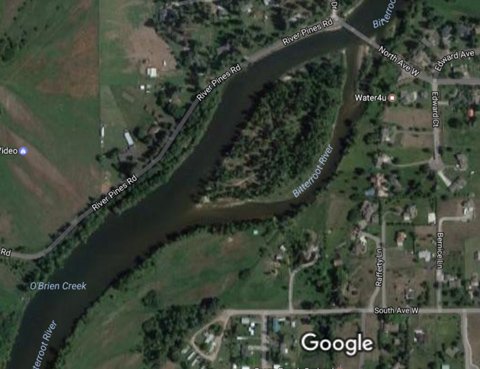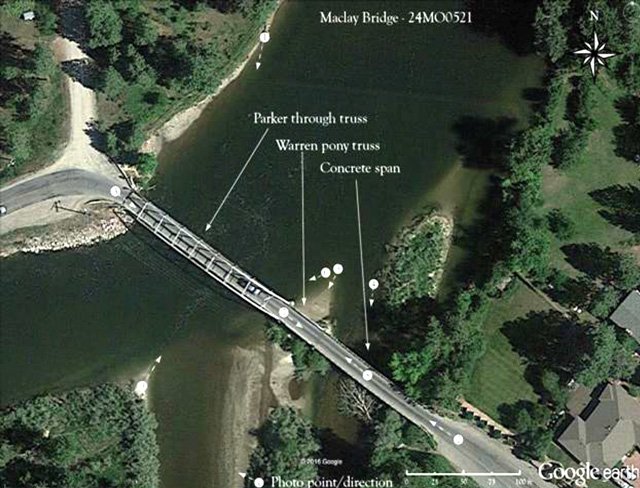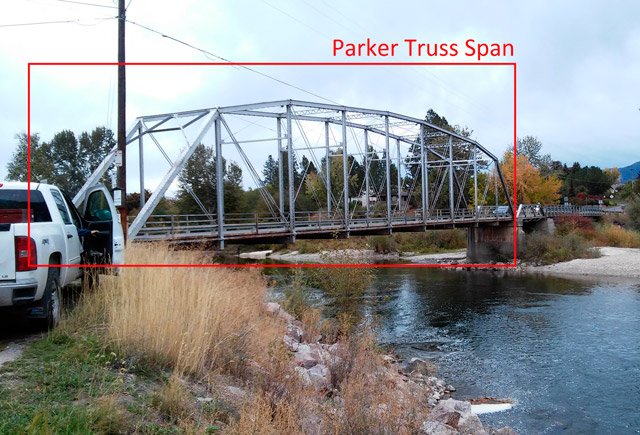Currently, Missoula County Commissioners are moving forward with a proposal to replace the historic Maclay Bridge with a new bridge that would span the Bitterroot River. Access to the new bridge would be at the western end of South Avenue, presently a dead-end.
The discussion of a new bridge to replace Maclay Bridge has been around for decades. It was considered in 1994 with an Environmental Assessment. That EA was never completed and ended with strong local opposition, and without a “Finding of No Significant Impact” (FONSI). In April of 2015, three County Commissioners reaffirmed their intent to build a new bridge and signed off to begin the project. County and state engineers told us that Maclay Bridge was functionally obsolete and could not be considered for rehabilitation. One Commissioner, Nicole Rowley, had been in office for only three months. Another, Bill Carey, resigned a few months later; and the third Commissioner, Jean Curtiss, still believes that Maclay Bridge should be replaced. MBA members strongly disagree with that contention.

In the fall of 2016 after their second public meeting HDR Engineering (HDR), the firm hired by Missoula County to design this project, came forward with their preferred alternative for the replacement bridge. HDR’s contract was to design a new bridge at the end of South Ave with a limited environmental evaluation under a Categorical Exclusion to the National Environmental Policy Act. HDR developed seven alternative bridge designs, including several fracture-critical designs, but evaluation of an alternative to rehabilitate Maclay Bridge was not included. The contract focused on environmental evaluation of the new bridge and its approaches, ignoring street upgrade elements of the Maclay Bridge Study Report completed in 2013.
HDR’s preferred alternative “Alternate 1B” is estimated to cost $13,130,000.00. Yes, that’s 13 MILLION dollars for just the bridge and its approaches. Improvements to South Avenue and River Pines have been ignored though area residents have reported many times, verbally and in writing, that this bridge will introduce significant traffic hazards to the community. These improvements are absolutely essential to comply with NEPA and MEPA requirements to identify all significant impacts and mitigate them. These necessary improvements were estimated to cost $1.9 million by the Maclay Bridge Study Report, but federal funding for an off-system bridge is limited to only the bridge and approaches. Rather than designing the complete project that mitigates these hazards, Missoula County chose to ignore them, saying they will decide how to deal with (pay for) them after the new bridge has been built.
The Maclay Bridge Alliance supports the rehabilitation of Maclay Bridge as an economical, pragmatic, and locally supported “middle way” alternative. It avoids building the new South Avenue Bridge with collateral street improvements at a high cost, or doing nothing and maintaining the current Maclay Bridge as it stands today.
The benefits of rehabilitating the existing Maclay Bridge include:
In September of 2016 MBA brought Dr. Jai Kim, PE, a Professor of Civil Engineering Emeritus at Bucknell University and his son Robert H. Kim, PE of BKLB Structural Engineers, Inc. to Missoula to inspect the historical Maclay Bridge and report to the public as to their findings.
The main purpose of bringing Dr. Kim and his son to Missoula was to have experts in restoration of historic bridges determine if rehabilitation of Maclay Bridge was feasible. Previous state and county studies had said that Maclay Bridge could not be rehabilitated, or that it could only be repaired by removing it and taking it to another location for repair, at a cost exceeding $8 million.
In advance of Dr Kim’s arrival, MBA put out a Press Release.
“It’s just not responsible to not consider rehabilitating Maclay Bridge,” said Peggie Morrison, a member of MBA in a Press Release during Dr. Kim’s visit. “At least don’t spend any more money on this over-priced and potentially unnecessary project until we hear from Dr. Kim. After all, if we’re correct and it turns out that Maclay Bridge can be rehabilitated to meet all of the structural, safety, and emergency concerns cited as to why a new bridge is needed, we may be able to save our taxpayers millions and millions of dollars and end up with just the bridge we need, the one we already have.”
Dr Kim’s team reviewed the safety issues, the fracture critical (structural redundancy) issues, as well as foundations and other important factors during their visit to Missoula.
“We will discuss the method of arch-superimposed bridge rehabilitation with a scale model of arch reinforced Parker Truss bridge,” said Dr. Kim. “The rehabilitated bridge with a pedestrian/bike way added will increase the load carrying capacity to an HS-20 live loading (36 tons), thereby changing the bridge’s structural redundancy status. By providing structural redundancy the “fracture critical” designation for the bridge is removed and the useful life of the bridge will be safely extended.”
“Other advantages of the rehabilitation,” stated Dr. Kim “are: during construction, the bridge remains open for use with only short interruptions, there will be no disruption of commercial activities, no loss of business, no need for the acquisition of new right-of-way, and no major modification of the bridge approaches.”

Dr. Kim’s analysis and PowerPoint presentation to the County Commissioners, agency employees and community members absolutely confirmed that Maclay Bridge could be rehabilitated in place.
This report from an esteemed national historic bridge engineer contradicts the previous assumption by Missoula County and MDT staff that Maclay Bridge could not be rehabilitated in place. MBA’s Proposal, the “Middle Way”, suggests a more compelling, economical, and neighborhood friendly way to rehabilitate and keep Maclay Bridge, while improving functionality and protecting the river system for years to come.


The economic situation requires that the bridge should usefully serve its purpose for as long as possible. Various methods of strengthening would help to prolong its useful life.
Rehabilitate Maclay Bridge by adding arches to meet 36-ton weight limit requirement. Design for HS-20 (36 tons). This would permit free use by the largest water tanker in the rural fire department fleet as well as school buses. This would exceed current use limitations.
Add a separate pedestrian/bikeway lane onto Parker truss main span, separating vehicle traffic from pedestrian/bike traffic.
Replace the Pony and concrete spans with new single span to allow for removal of the two piers currently in the river.


According to Robert Schweitzer, a member of MBA, “Residents have drawn a line in the sand. They demand a complete Environmental Impact Statement (EIS) to fully review all the alternatives. Alternatives must include the rehabilitation of Maclay Bridge.”
“Or, if the Categorical Exclusion is preferred since an EIS may lead to this result anyway, use it appropriately as intended by NEPA and MEPA. Go straight to rehabilitation of Maclay Bridge.”

© 2021 All rights reserved. Maclay bridge alliance